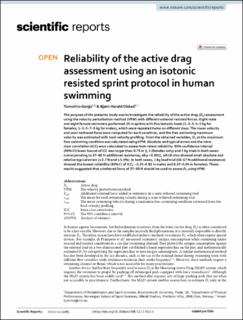| dc.contributor.author | Gonjo, Tomohiro | |
| dc.contributor.author | Olstad, Bjørn Harald | |
| dc.date.accessioned | 2022-12-01T12:47:34Z | |
| dc.date.available | 2022-12-01T12:47:34Z | |
| dc.date.created | 2022-08-23T10:25:25Z | |
| dc.date.issued | 2022 | |
| dc.identifier.citation | Scientific Reports. 2022, 12(2022), Artikkel 13085. | en_US |
| dc.identifier.issn | 2045-2322 | |
| dc.identifier.uri | https://hdl.handle.net/11250/3035372 | |
| dc.description | This article is licensed under a Creative Commons Attribution 4.0 International License, which permits use, sharing, adaptation, distribution and reproduction in any medium or format, as long as you give appropriate credit to the original author(s) and the source, provide a link to the Creative Commons licence, and indicate if changes were made. The images or other third party material in this article are included in the article's Creative Commons licence, unless indicated otherwise in a credit line to the material. If material is not included in the article's Creative Commons licence and your intended use is not permitted by statutory regulation or exceeds the permitted use, you will need to obtain permission directly from the copyright holder. | en_US |
| dc.description.abstract | The purpose of the presents study was to investigate the reliability of the active drag (Da) assessment using the velocity perturbation method (VPM) with different external resisted forces. Eight male and eight female swimmers performed 25 m sprints with five isotonic loads (1–2–3–4–5 kg for females; 1–3–5–7–9 kg for males), which were repeated twice on different days. The mean velocity and semi-tethered force were computed for each condition, and the free-swimming maximum velocity was estimated with load-velocity profiling. From the obtained variables, Da at the maximum free-swimming condition was calculated using VPM. Absolute and typical errors and the intra-class correlation (ICC) were calculated to assess test–retest reliability. 95% confidence interval (95% CI) lower bound of ICC was larger than 0.75 in 3, 4 (females only) and 5 kg trials in both sexes (corresponding to 37–60 N additional resistance; all p < 0.001), which also showed small absolute and relative typical errors (≤ 2.7 N and ≤ 4.4%). In both sexes, 1 kg load trial (16–17 N additional resistance) showed the lowest reliability (95% CI of ICC; − 0.25–0.83 in males and 0.07–0.94 in females). These results suggested that a tethered force of 37–60 N should be used to assess Da using VPM. | en_US |
| dc.language.iso | eng | en_US |
| dc.subject | data acquisition | en_US |
| dc.subject | fluid dynamics | en_US |
| dc.subject | scientific data | en_US |
| dc.title | Reliability of the active drag assessment using an isotonic resisted sprint protocol in human swimming | en_US |
| dc.type | Peer reviewed | en_US |
| dc.type | Journal article | en_US |
| dc.description.version | publishedVersion | en_US |
| dc.rights.holder | © The Author(s) 2022 | en_US |
| dc.source.pagenumber | 6 | en_US |
| dc.source.volume | 12 | en_US |
| dc.source.journal | Scientific Reports | en_US |
| dc.identifier.doi | 10.1038/s41598-022-17415-5 | |
| dc.identifier.cristin | 2045224 | |
| dc.description.localcode | Institutt for fysisk prestasjonsevne / Department of Physical Performance | en_US |
| dc.source.articlenumber | 13085 | en_US |
| cristin.ispublished | true | |
| cristin.fulltext | original | |
| cristin.qualitycode | 1 | |
